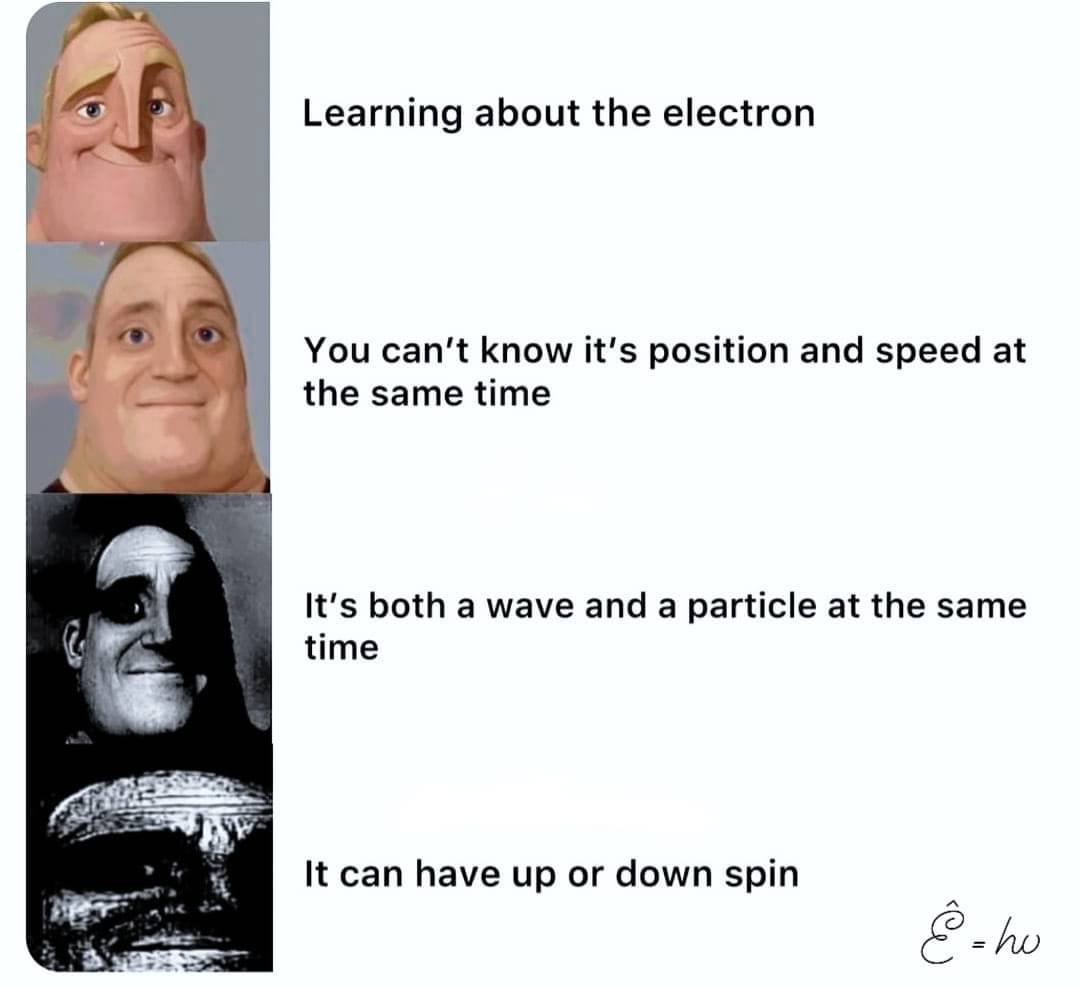this post was submitted on 27 May 2024
495 points (95.4% liked)
Science Memes
10348 readers
1760 users here now
Welcome to c/science_memes @ Mander.xyz!
A place for majestic STEMLORD peacocking, as well as memes about the realities of working in a lab.

Rules
- Don't throw mud. Behave like an intellectual and remember the human.
- Keep it rooted (on topic).
- No spam.
- Infographics welcome, get schooled.
Research Committee
Other Mander Communities
Science and Research
Biology and Life Sciences
- [email protected]
- [email protected]
- [email protected]
- [email protected]
- [email protected]
- [email protected]
- [email protected]
- [email protected]
- [email protected]
- [email protected]
- [email protected]
- [email protected]
- [email protected]
- [email protected]
- [email protected]
- [email protected]
- [email protected]
- [email protected]
- [email protected]
- [email protected]
- [email protected]
- [email protected]
- [email protected]
- [email protected]
- !reptiles and [email protected]
Physical Sciences
- [email protected]
- [email protected]
- [email protected]
- [email protected]
- [email protected]
- [email protected]
- [email protected]
- [email protected]
- [email protected]
Humanities and Social Sciences
Practical and Applied Sciences
- !exercise-and [email protected]
- [email protected]
- !self [email protected]
- [email protected]
- [email protected]
- [email protected]
Memes
Miscellaneous
founded 2 years ago
MODERATORS
you are viewing a single comment's thread
view the rest of the comments
view the rest of the comments

There might only be one, ever.
This is actually the first time I'm hearing about single electron theory, but I feel validated now that I'm learning about it. I have for a long time believed that the universe is made of a single photon, since photons exist outside of time. Then, if electrons are made of a "pair" of entangled photons, since every photon is the same photon, it would follow that every electron is also the same electron. And one could assert that quarks are just entangled electrons and positrons in various ratios and combinations. Which in my mind leads to the conclusion that all of time and space and matter doesn't actually exist and we are just imaginary mathematical figments.
Welcome to quantum field theory! There is a single field for every type of particle in the standard model, but electrons are not made of photons.
Not in the current standard model, for sure. Or is there a reason empirically why they simply can't be.
Some properties of the electron are not present in photons, such as the lepton number and the electric charge.
It's possible to create an electron positron pair out of a couple of high energy photons, but that is also true with many other elementary particles.
For a good intuitive introduction to this topic, i suggest Feynman's book QED https://www.amazon.ca/QED-Strange-Theory-Light-Matter/dp/0691164096/
It's a short read, and explains how positrons can be seen as electrons going backwards in time!
That sounds super interesting! Can't read it until I get home (am on vacation at Disneyland right now) but in about a week's time I hope you don't mind if I reply with my updated understanding, and maybe a question or two.
I made a comment a while back (on my alt account) about how the origin of the universe can be expressed as a simple formula: https://sopuli.xyz/comment/3303086
So, I'm curious if that viewpoint will shift at all with a better understanding of electron positron interactions. It kind of makes sense to me that the universe and the antiverse are stacked on top of each other but with time pointing in opposite directions. But I'm sure I'm oversimplifying Feynman's theory and I'll have to read his reasoning to really understand.
It is! Although it only deals with the day-to-day working of electromagnetism (quantum electrodynamics), but this explains the working of everything in our current life apart from nuclear power station and fusion in the sun's core.
The text was written before we developed the model for nuclear forces (strong and weak), so it doesn't touch that subject. We know now that sound and weak interactions work in a very similar way to QED, with extension for notre charges.
...Here's Tom with the weather?
For the people downvoting, may I hear a counterpoint as to why this wouldn't make sense?